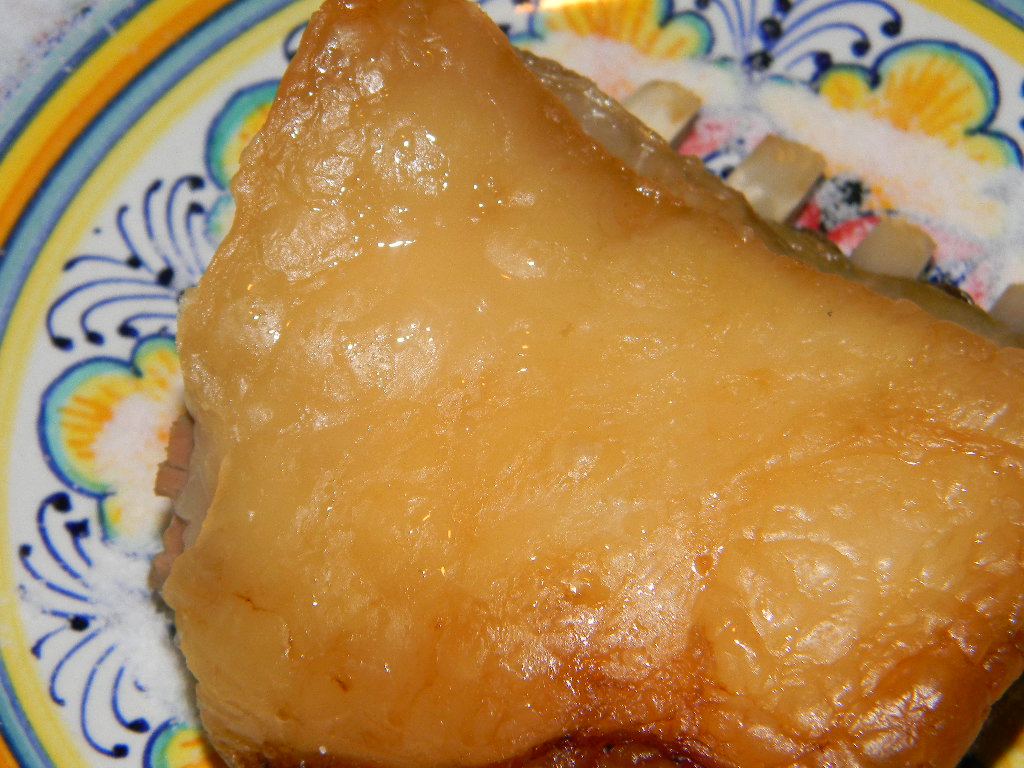Keto Carnivory
Omega 6 in Pork and Poultry
I made some very interesting discoveries yesterday!
I found out that chickens originally came from red junglefowl (which are beautiful, and look a lot like pheasants):
And so their actual true diet should be completely foraged from the jungle, and include grubs, seeds, and lizards. Huh, not corn and soy!
And, I found that when chickens are fed a diet more similar to their true diet (allowed to forage), they have an omega fatty acid ratio similar to grass-finished beef!
I wonder if this is why I don't feel well when I have eaten poultry and eggs, because they are just way too high in omega 6's due to being fed grain. I know that our local grassfed farmer's chickens do get to forage, but they are also fed grain, and I still get diarrhea when eating those eggs. So maybe still too high in omega 6 fatty acids.
Similarly, pigs are descended from wild boar:
Their actual true diet should be acorns, beechnuts, bulbs, roots, and small animals, not corn and soy! And again, when they are fed their natural diet, their fatty acid profile is much better than pork raised on soy and corn:
"Feeding acorn ad libitum during the last three weeks of fattening period increased the content of alpha linolenic acid (C18:3 n-3) in the longissimus muscle (0.37 vs. 0.12%, P < 0.01) and consequently decreased the n-6/n-3 ratio (24.1 vs. 69.3, P < 0.01) in comparison to concentrate fed pigs."
(PDF) Influence of Acorn Intake on Blood Lipid Profile and Longisimus Muscle Characteristics of Black Slavonian Pig. Available from:
https://www.researchgate.net/publication/228350078_Influence_of_Acorn_Intake_on_Blood_Lipid_Profile_and_Longisimus_Muscle_Characteristics_of_Black_Slavonian_Pig [accessed Nov 30 2018].
As a consequence, the n-6/n-3 ratio in the muscle o
f acorn finishing pigs was nearly threefold lower
than in concentrate finishing pigs
As a consequence, the n-6/n-3 ratio in the muscle o
f acorn finishing pigs was nearly threefold lower
than in concentrate finishing pigs
"As a consequence, the n-6 / n-3 ratio in the muscle of acorn finishing pigs was nearly threefold lower than in concentrate finishing pigs..."
Note: The omega 6 / 3 ratio in acorn fed pork was still far higher than healthy amounts (23:1 as opposed to healthy amounts being 4:1 or under), but it was at least better than commercial pork (which can be as high as 70:1!). Even wild boar meat can be pretty high (11:1 to 17:1):
https://www.tandfonline.com/doi/full/10.1080/1828051X.2017.1292114
So even acorn-fed pork or wild boar should only be consumed occasionally, not on a regular basis, because of the unhealthy omega ratio and inflammatory properties. 100% forage-fed poultry
could be as healthy as beef and lamb, however I have never found
any farmers bringing up poultry entirely on forage. So again, poultry and eggs are best only consumed rarely and not regularly.
I guess I will continue with 100% grassfed lamb mostly then, and some 100% fatty grassfed beef cuts such as oxtail, wild caught fatty fish from time to time, and just occasional wild boar or acorn-fed pork. I will probably continue to avoid poultry and eggs altogether, since they are always grain-fed. I do not support the use of grains as feed for any animals, including humans. Plus, agriculture is terrible for the environment, whereas grass-fed and grass-finished ruminant meats and wild-caught fish actually improve the environment. If only it was possible to get them without the use of plastics!
Speaking of pork, the mangalitsa pork which I ordered a month ago finally arrived! This is the type of pork that is used at the Paleomedicina clinic in Hungary. The mangalitsa pork farmer I found still feeds with grain, so this is surely still very high in omega 6 fatty acids, but I wanted to try it. I had some of the pigs' feet this morning, so delicious and gooey and collagen-y. Then my acorn-fed pork arrived late yesterday! So I will try some of those pigs' feet tomorrow to compare! Once I get through all this pork, though, I think I will purchase wild boar instead, since it is much less inflammatory.
##


Comments
Post a Comment